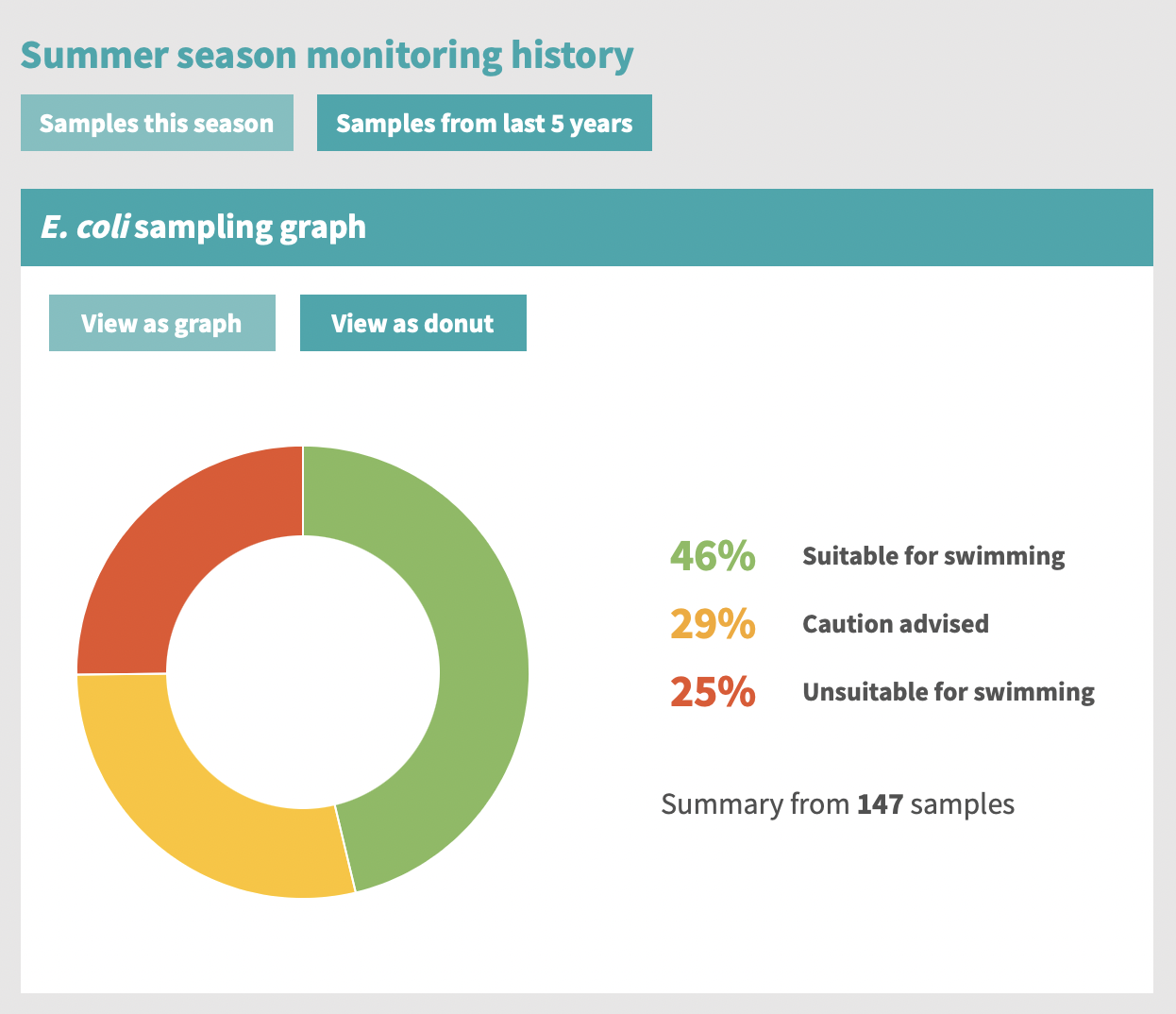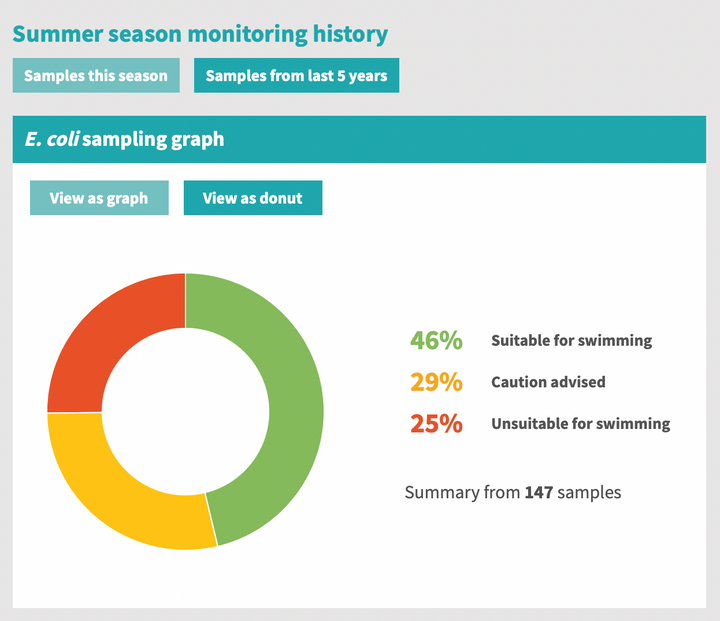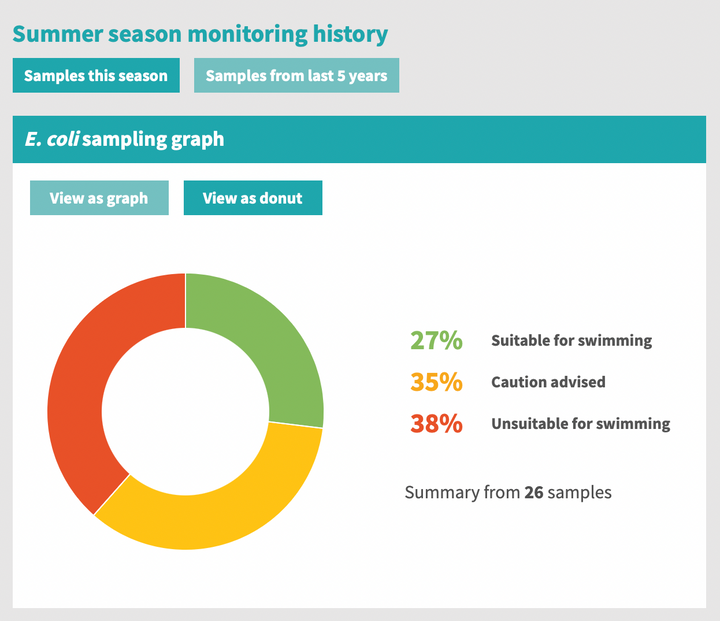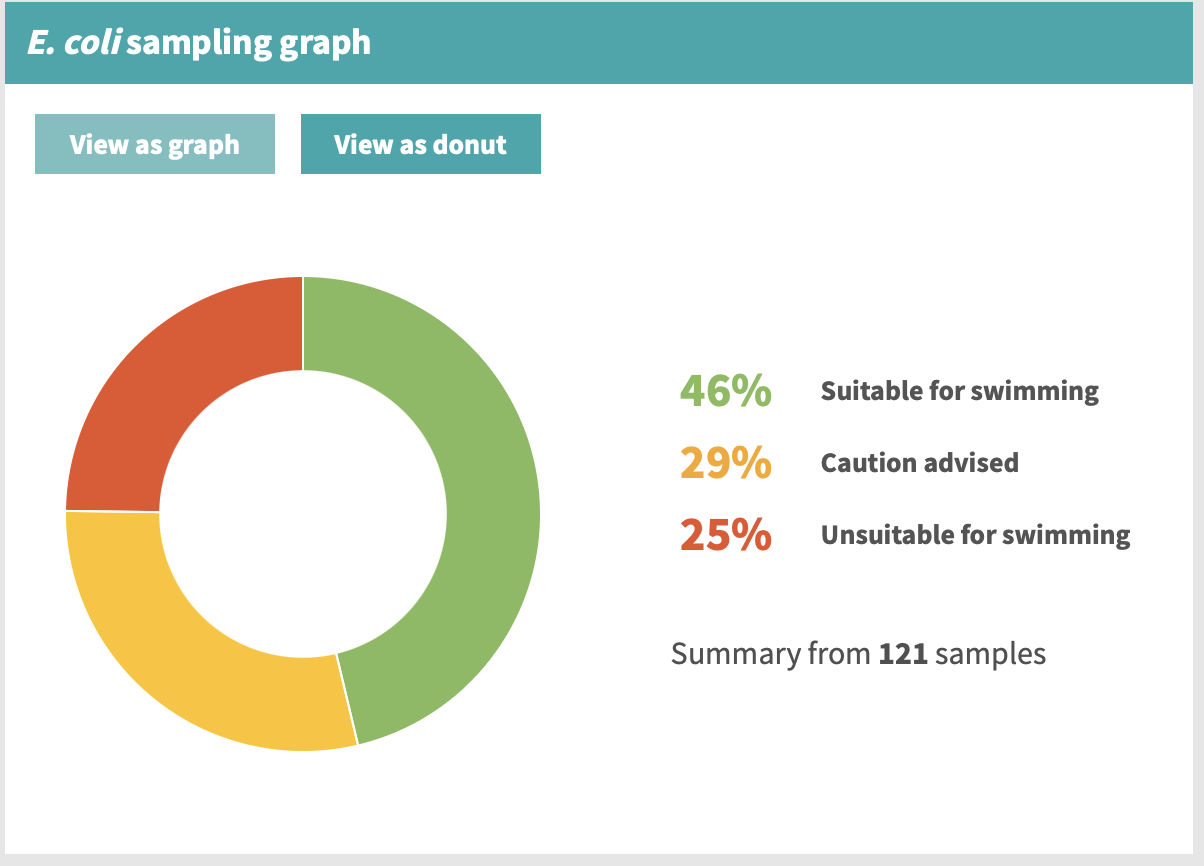E. Coli readings at the footbridge

Each week over summer LAWA tests the water at the footbridge for E. Coli and publishes the results a few days later. This year results have been poor. According to the Traffic Lights System we have seen 10 Red, 9 Orange and only 7 Green as at 27 April 2022. That concludes this season's monitoring.
Update 25 March 2022: for the first time in almost 2 months we have a "green" result, and the lowest of the season: 85. (Bested on 05 April with 52.)
Latest reading: 27 April 2022: 253 (green).
Red: Unsuitable for swimming – The monitoring result did not meet the national guidelines at the time of testing.
Orange: Caution advised – The monitoring result for E. coli was slightly elevated at the time of testing. Water quality generally suitable for swimming, but young children, elderly or those with compromised health may be at increased risk of illness.
Green: Suitable for swimming – The monitoring result met national water quality guidelines at the time of testing.
Last year's results
Overall between 02 November 2020 and 30 April 2021: 15 green, 6 orange and 4 red. More than half the time the river has fallen into the green
category. This is an improvement over previous years.
This year's results
Overall between 02 November 2021 and 30 April 2022: 7 green, 9 orange and 10 red. About 1/4 of the time the river has fallen into the green
category. This is worse than previous years.
- 02 November 2021: 1050 (red)
- 09 November 2021: 391 (orange)
- 15 November 2021: 2098 (red).
- 23 November 2021: 958 (red).
- 30 November 2021: 8160 (red).
- 07 December 2021: 8660 (red).
- 14 December 2021: 10500 (red).
- 21 December 2021: 364 (orange).
- 28 December 2021: 1274 (red).
- 04 January 2022: 201 (green).
- 11 January 2022: 355 (orange).
- 18 January 2022: 146 (green).
- 25 January 2022: 368 (orange).
- 02 February 2022: 228 (green).
- 08 February 2022: 1145 (red).
- 15 February 2022: 488 (orange).
- 22 February 2022: 959 (red).
- 01 March 2022: 399 (orange).
- 08 March 2022: 631 (red).
- 15 March 2022: 266 (orange).
- 22 March 2022: 85 (green).
- 29 March 2022: 275 (orange).
- 05 April 2022: 52 (green).
- 12 April 2022: 305 (orange).
- 20 April 2022: 161 (green).
- 27 April 2022: 253 (green).
E. Coli background
LAWA - Beach and freshwater recreation monitoring says:
When contaminated by human or animal faeces water can contain disease-causing bacteria, viruses and protozoa (such as salmonella, campylobacter or giardia). These organisms can pose a health risk in water that is used for recreational activities such as swimming. The most common illness is gastroenteritis but respiratory illness and ear and skin infections may also occur. …
The quality of water for swimming is determined by measuring ‘faecal indicator bacteria’ (enterococci in coastal waters and E. coli in rivers and lakes) which indicate the levels of disease causing organisms in the water.
LAWA - Faecal Indicators says:
E. coli (Escherichia coli) is a type of bacteria commonly found in the guts of warm-blooded mammals (including people) and birds. High E. coli concentrations in freshwater can be harmful to humans.
Common sources of E. coli bacteria are untreated human wastewater discharges, stormwater run-off and animal waste. Faecal concentrations are typically higher in pastoral streams but even near-pristine streams are not totally free from E. coli because of faecal deposition by birds and wild animals.



